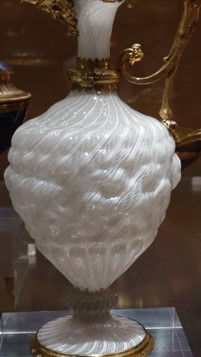
The Artisans of Venice
(In-Person Only)
The City of Venice has been eulogised by poets and writers as La Serenissima, a City of Dreams rising from the luminous and tranquil waters of the Venetian lagoon. Its network of canals shimmer with a thousand reflections of palaces and its churches echo with musical notes. The city’s picturesque beauty, unique topography and traditions of Carnival have earned it fulsome praise as ‘The Queen of the Adriatic’ or ‘The City of Masks’. As we will see in this study day or study course, Venice can also be described in myriad ways as the City of Silk, Gold, Mosaics, Glass, Lapis Lazuli, Book-Binding, Musical Instruments or Gondolas. For centuries, Venice was at the centre of mercantile exchanges in luxury commodities between Europe, the Levant, North Africa and East Asia and attracted thriving communities of skilled artisans. Venetian life hummed with the sound of a thousand workshops whilst glass-makers were famously sequestered on the island of Murano. The legacy of the artisans of Venice can be seen in magnificent Venetian palace, church and library interiors, in paintings and works of art and also in contemporary craft traditions, Carnival and the cuisine of La Serenissima.

Detail of a silver-mounted Venetian latticino glass ewer, 1600-19 V&A

A Murano glass bowl raised on a seahorse stem, by Antonio Salviati, late 19th Century, Venice, Museo delle Arti Decorative, Milan

Fragment of Venetian silk, Museo Correr, Venice
Lecture 1: ‘From Artisans to Angels, Guilds to Gold, Pigments to Perfume and Silk to Serenades’
In the first lecture, we are introduced to Venice, to the historic role of the different craft guilds, the trade in luxury commodities and rare materials and the location of craft workshops within the city and the outlying islands of Murano and Burano. We will consider the wide variety of works of art which are the subject of this study day and of which the title gives a hint.

Christmas at San Marco, Venice

Lecture 2: ‘From Chandeliers to Shoes, Goblets to Gondolas, Mirrors to Marquetry and Porcelain to Paper’
This lecture will be a detailed study of the development of craft traditions in Venice, looking at surviving works of art held in museum collections in the city itself and on to London, Paris to New York.
Murano glass chandelier in Ca'Rezzonico, Venice
Lecture 3: ‘From Bricks to Bridges, Paintings to Palaces, Mosaics to Masks and Lanterns to Legacy’
The legacy of the artisans of Venice is ever-present when we look closely at Venetian paintings from the Renaissance Golden Age through to scenes of 18th Century masquerades. Their work pervades the city’s built environment, dazzling the eyes in architectural masterpieces such as the Doge’s Palace, the Basilica of San Marco and other churches and in the magnificent interiors of the Marciana Library, La Fenice Opera House and the palaces which line the Grand Canal. Traditional crafts including glass-blowing, silk, paper and mask-making as well as the living artisanal heritage of fine cuisine are still alive in contemporary Venice.
Text © Anne Haworth
